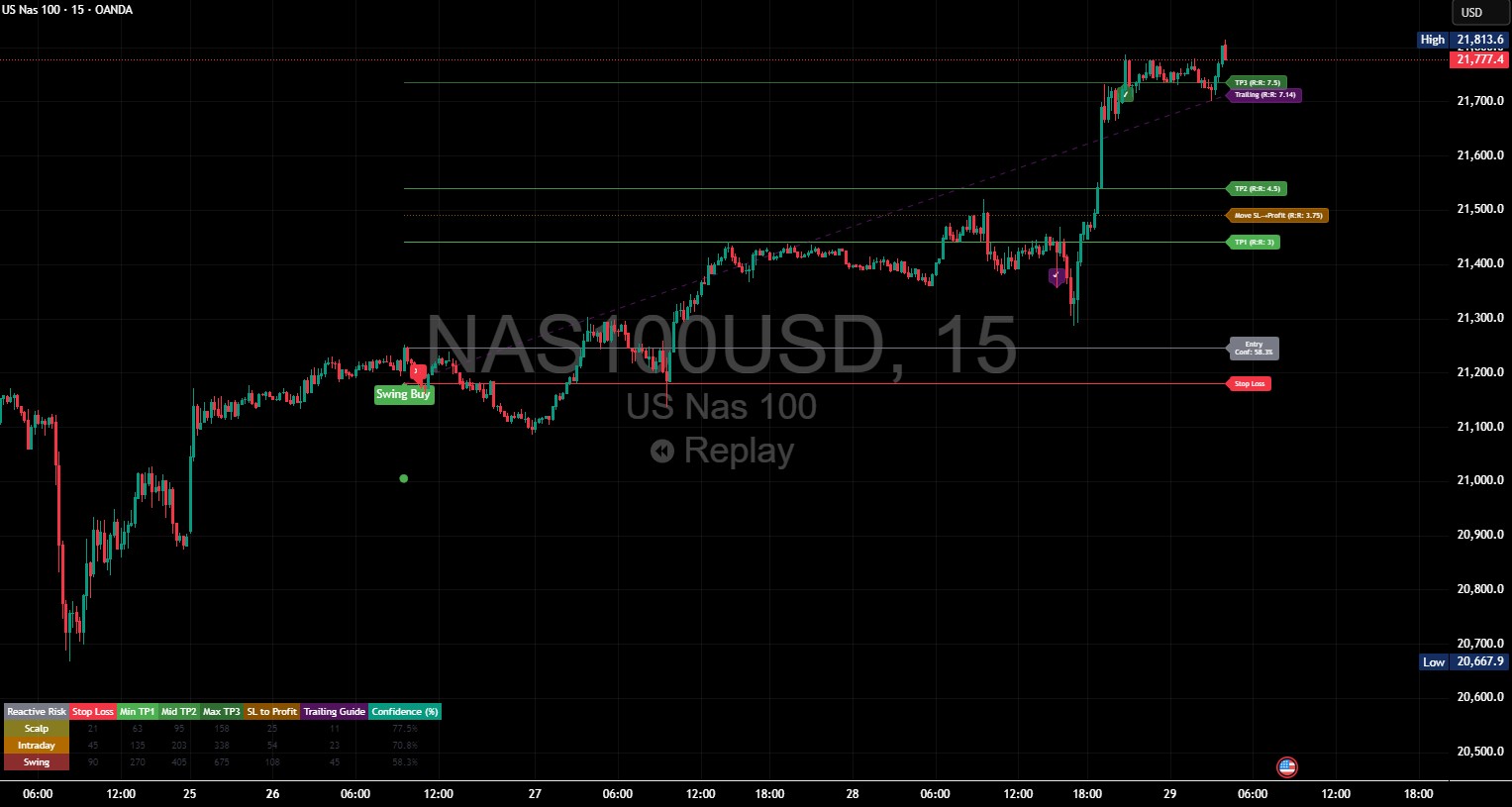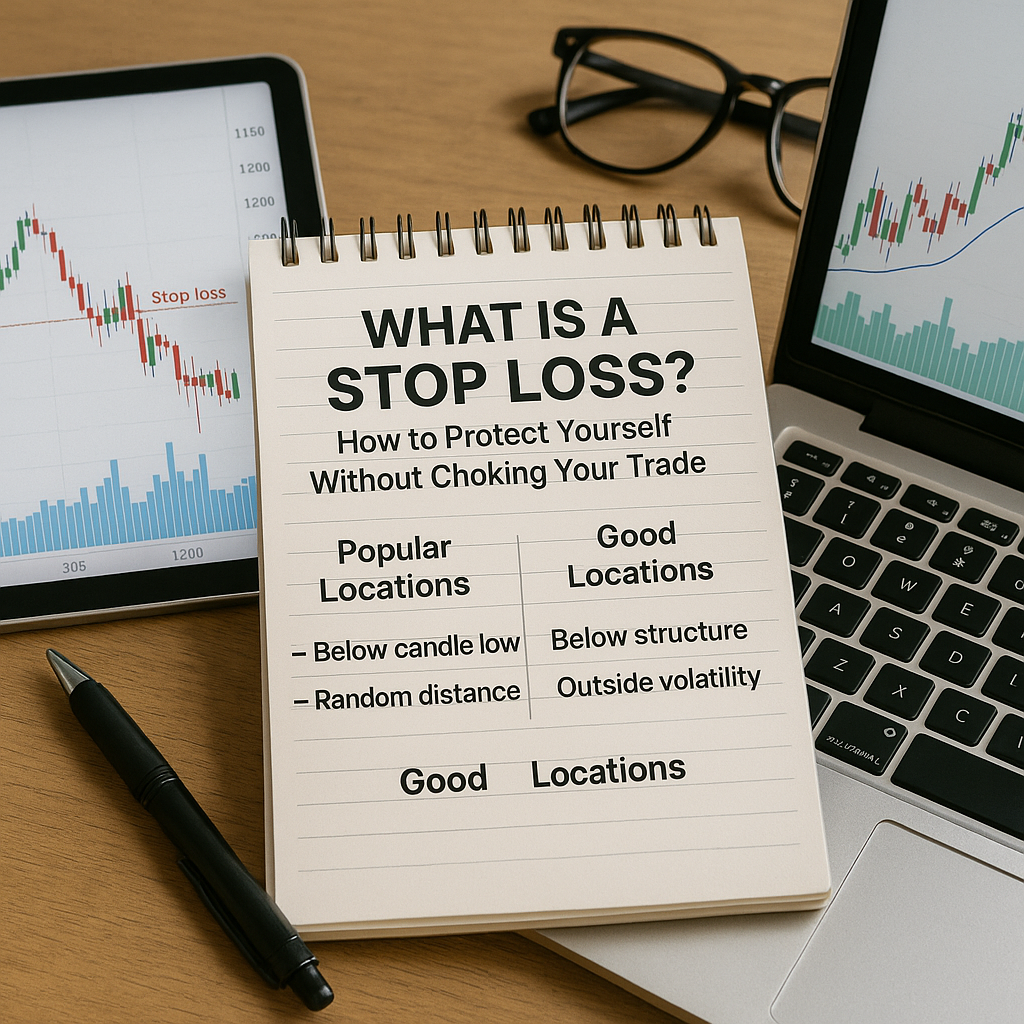How to Protect Yourself Without Choking Your Trade
If you’ve just started learning to trade, you’re likely hearing the phrase “Use a stop loss” everywhere. And while it’s absolutely true that having a stop loss is crucial, what’s rarely explained is how to place one that actually helps you — not one that sabotages you.
Used well, your stop loss acts like a seatbelt: it doesn’t guarantee a smooth ride, but it keeps you safe when conditions shift.
Used poorly, it becomes either a trap door or a false sense of security.
Let’s dig into how to use stop losses with confidence and clarity.
🔍 What is a Stop Loss?
A stop loss is a pre-defined price level where your trade automatically closes to protect you from further loss.
You decide ahead of time:
“If price reaches here, I want to be out — because the trade idea has failed or I no longer want exposure.”
It’s a non-negotiable exit that helps remove emotional decision-making in the heat of the moment.
But the value of a stop loss depends entirely on where you put it and why.
❌ The Problem with Popular Stop Loss Locations
Many new traders place stop losses in common, convenient areas:
A few points below the entry candle
Just behind the last swing low or high
Right at a round number
A random fixed distance (e.g., “I always use a 20-point stop”)
While these might seem logical at first, they often sit in obvious, high-traffic zones that larger players use as liquidity traps. These areas tend to:
Get hunted before a move plays out
Trigger early exits in otherwise valid setups
Create the illusion that “the market is against you”
In truth, the market isn’t targeting you — it’s just responding to where many stops naturally cluster.
If you’re placing stops where everyone else is, you’re handing the market a map to your exit.

✅ What Makes a Good Stop Loss Location?
A good stop loss isn’t about comfort — it’s about logic.
Ask:
“Where would the market need to go to invalidate my idea?”
A high-quality stop loss:
Lives behind market structure, not inside it
Sits outside consolidation or accumulation zones
Leaves room for natural volatility (wiggles, tests, false breaks)
Aligns with how the market is currently moving (e.g., fast trend vs slow rotation)
If you’re buying a breakout, the stop should often sit below the last clear consolidation or “base.”
If you’re fading a level, the stop should sit beyond where price has previously rejected — not right at the rejection itself.
It’s not about protecting from every possible loss — it’s about only exiting when your trade logic is wrong.
🎯 Why Entry and Stop Work Together
Here’s something rarely talked about:
Your stop loss placement is deeply connected to your entry.
Let’s say you enter late into a move — after the breakout has already run. Now, you’re forced to either:
Use a wide stop (hurts your risk-to-reward), or
Use a tight stop (increases your odds of being knocked out)
Either way, you’re at a disadvantage.
On the flip side, if you enter near a clean support or compression zone, you can:
Use a tighter stop with better protection
Improve your risk-to-reward ratio naturally
Place your exit in a spot where price must work harder to prove you wrong
Good entries create room for safe stops. Bad entries force poor stop placement.
This also directly impacts your R:R (Risk-to-Reward) ratio, which is the subject of a full post here if you’d like to explore that more deeply.
🔁 Stop Losses in Trending vs Choppy Markets
Market conditions should also influence your stop loss logic.
In a strong trend, you might place stops:
Behind recent pullbacks or flags
Below structure that confirms continuation
Using a multiple of ATR (Average True Range) to allow healthy volatility
In a range or chop, stops should:
Sit outside the boundaries of the box
Account for false breaks and fake outs
Be paired with patience (tight stops often get punished here)
Trying to use a “one size fits all” stop loss will always backfire.
💡 A Simple Rule of Thumb
Before you enter a trade, ask:
Where is this trade invalidated?
Can I place my stop there comfortably?
Does the reward (my target) justify the risk to that stop?
If you can’t say yes to all three, it’s not a setup — it’s a gamble.
📚 Stop Loss = Your Thesis Failsafe
When you place a stop loss based on structure, logic, and volatility, it becomes your thesis failsafe.
If it gets hit, it’s not about being “wrong” — it’s that the market did something different, and your idea didn’t hold.
That’s not failure. That’s control.
And control is what keeps you in the game long enough to learn and succeed.
🛡️ Learn With Titan
At Titan Protect, we believe stop losses should be more than just emergency exits — they should be strategic tools for clarity and structure.
Our indicators support this by:
✅ Showing SL/TP zones visually based on structure, volatility, and trade type
📉 Projecting risk-to-reward ratios live, so you can judge a setup before you act
🧠 Tracking trade outcomes with labels like “Win”, “Loss”, “Breakeven”, or “Timeout” to give real-time feedback on your logic
🔄 Supporting adaptive stop logic that adjusts with the context of the move — no more “random” stops
Want to see how this works in real-time, on a chart you already use?
We’d be happy to show you how structure-based risk planning works .
👉 Reach out here or explore the Members’ Dashboard to learn more.


